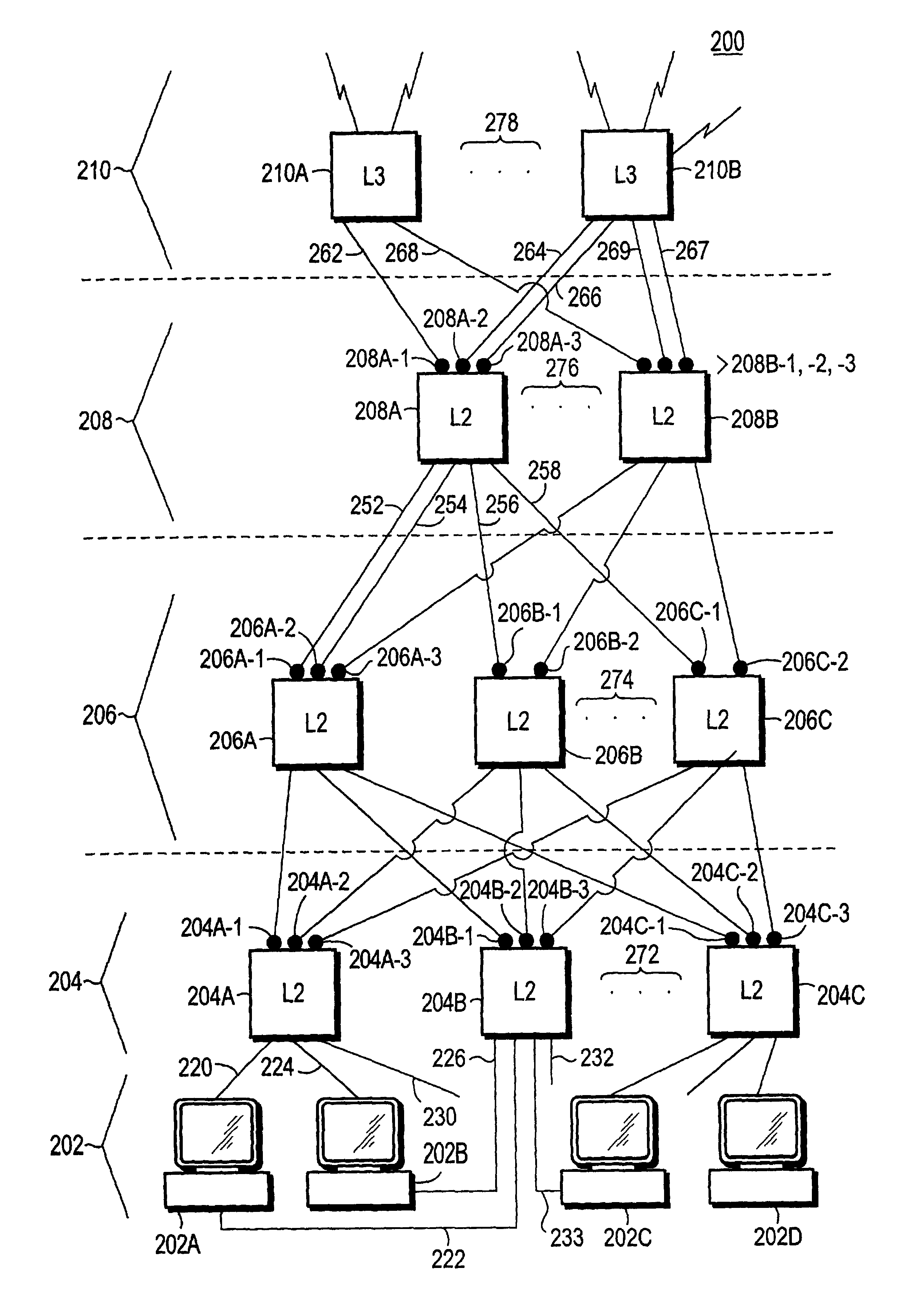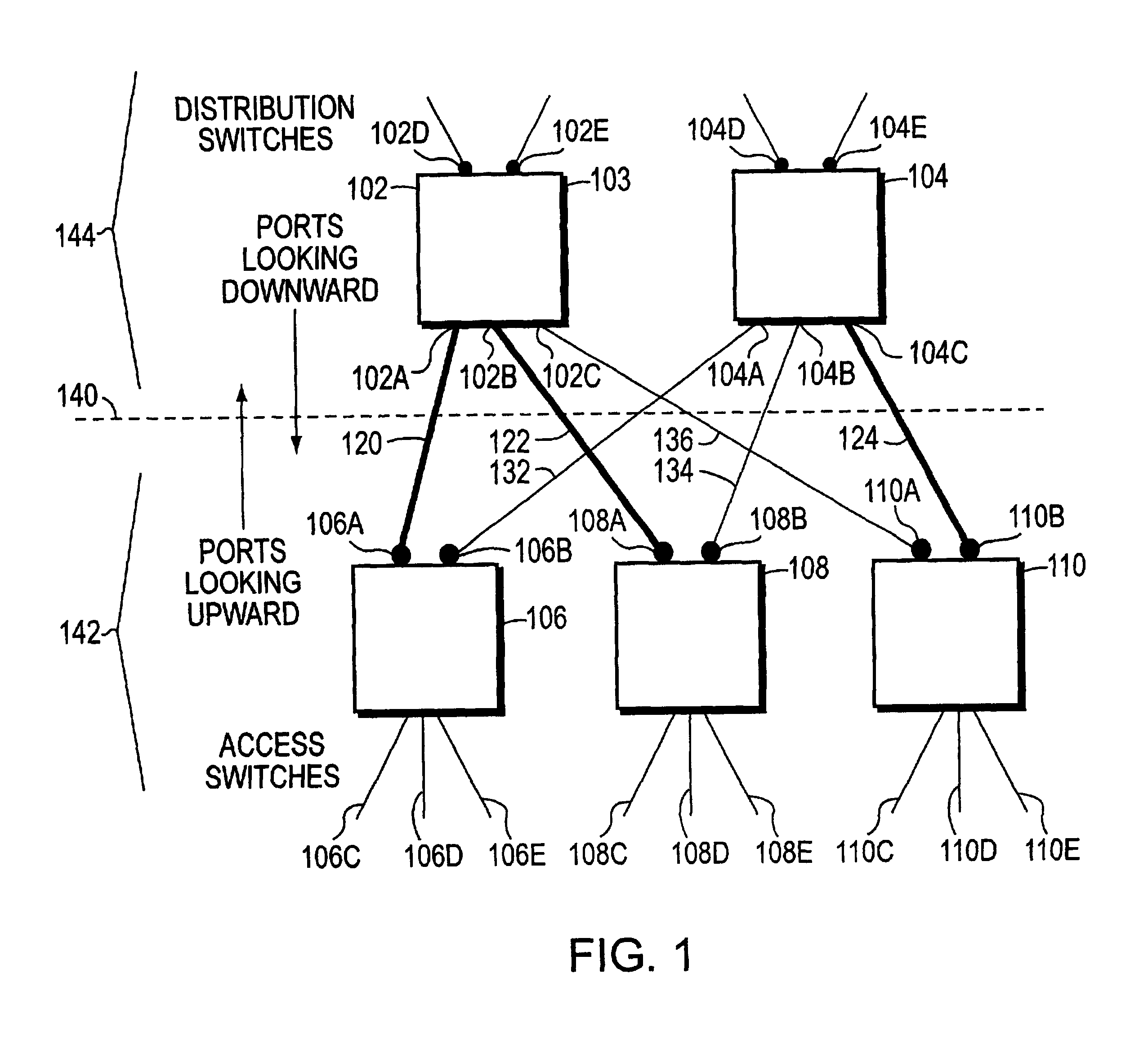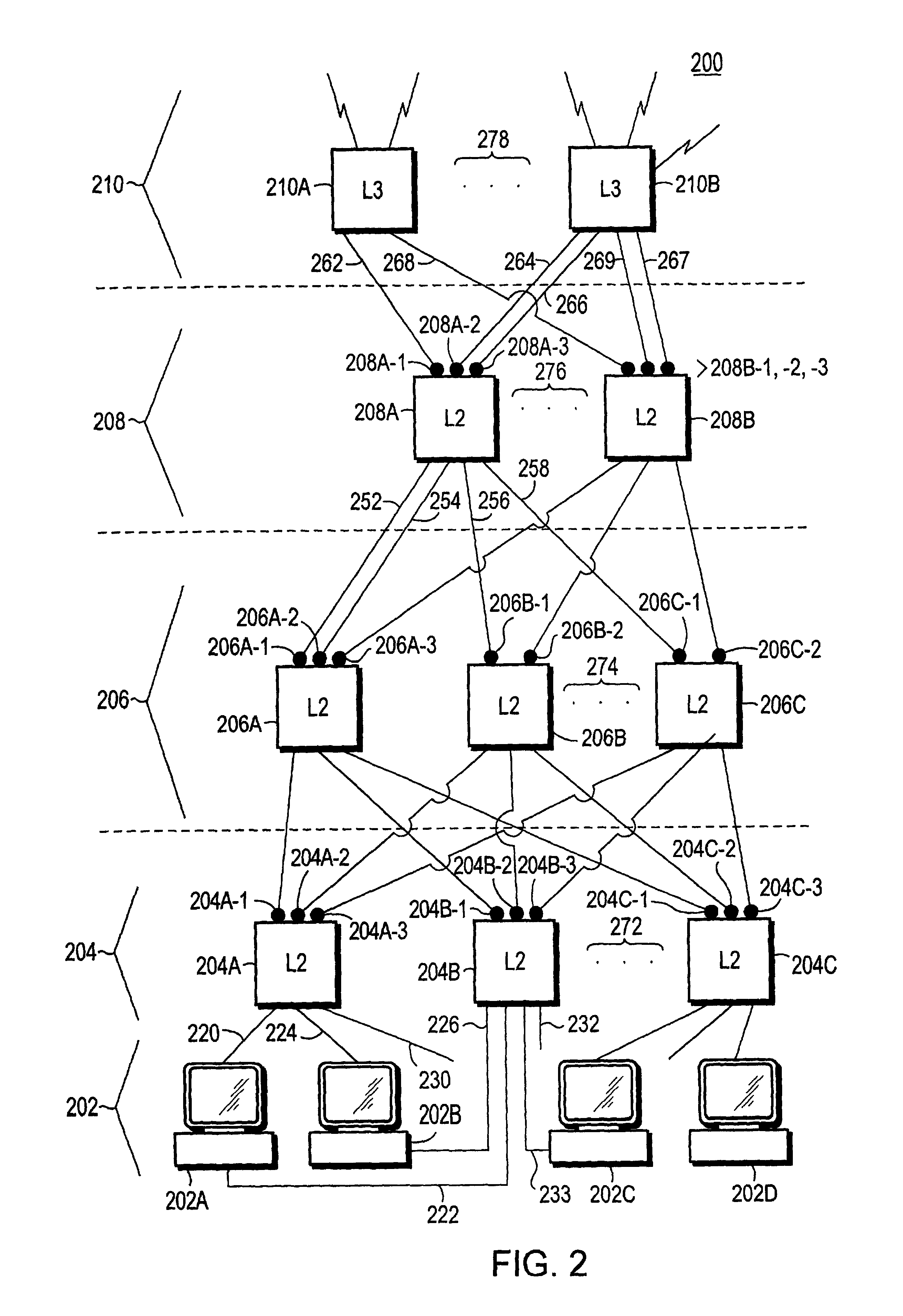Apparatus and method for preventing one way connectivity loops in a computer network
a technology of computer network and one-way connectivity, applied in the field of switches, can solve the problems of one-way loops and insufficient methods for reliably detecting one-way connectivity loops, and achieve the effect of eliminating loop formation
- Summary
- Abstract
- Description
- Claims
- Application Information
AI Technical Summary
Benefits of technology
Problems solved by technology
Method used
Image
Examples
Embodiment Construction
[0029]Turning now to FIG. 1, layer 2 switches 102, 104, 106, 108, and 110 are shown. Switch 102 and switch 104 represent distribution switches. Switch 106, 108, and 110 represent access switches. The access switches are selected by a person, for example a network manager, to be lower on the spanning tree than the distribution switches.
[0030]Port 106A and port 106B have Uplinkguard enabled. Switch 108 has port 108A and port 108B with Uplinkguard enabled. Switch 110 has port 110A and port 110B Uplinkguard enabled. The Uplinkguard ports of access switches 106, 108, and 110 are each connected to distribution switches 102 and 104.
[0031]For example, Uplinkguard enabled port 106A is connected to port 102A, Uplinkguard enabled port 108A is connected to port 102B. Uplinkguard enabled port 110A is connected to port 102C.
[0032]Likewise, Uplinkguard enabled port 106B is connected to port 104A. Uplinkguard enabled port 108B is connected to port 104B. Uplinkguard enabled port 110B is connected to...
PUM
 Login to View More
Login to View More Abstract
Description
Claims
Application Information
 Login to View More
Login to View More - R&D
- Intellectual Property
- Life Sciences
- Materials
- Tech Scout
- Unparalleled Data Quality
- Higher Quality Content
- 60% Fewer Hallucinations
Browse by: Latest US Patents, China's latest patents, Technical Efficacy Thesaurus, Application Domain, Technology Topic, Popular Technical Reports.
© 2025 PatSnap. All rights reserved.Legal|Privacy policy|Modern Slavery Act Transparency Statement|Sitemap|About US| Contact US: help@patsnap.com



